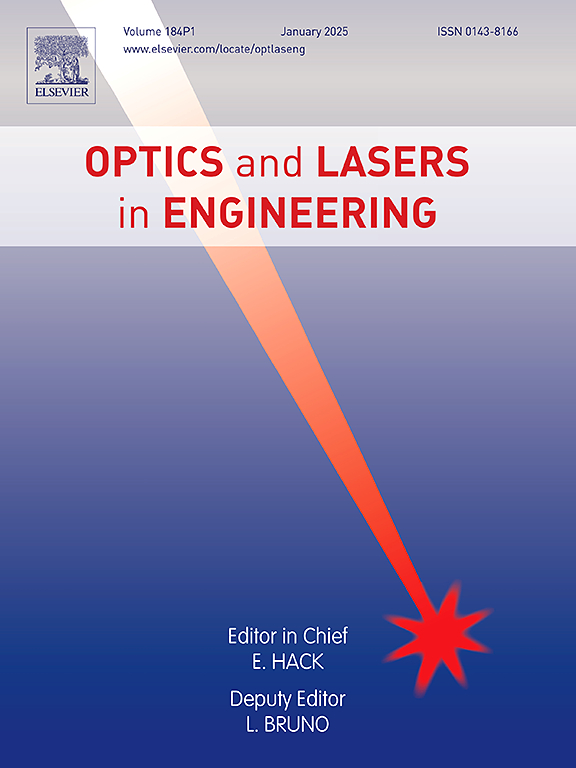基于连续体拓扑束缚态的超宽检测范围高 Q 值折射率传感器
IF 3.7
2区 工程技术
Q2 OPTICS
引用次数: 0
摘要
以往对折射率传感器的研究表明,其传感特性受到背景环境折射率变化的限制,导致传感器的优点系数(FOM)和灵敏度显著降低。在此,我们设计了一种由狄拉克半金属组成的高 Q 值折射率传感器。所提出的传感器基于连续体中的拓扑束缚态(BICs),具有发散的品质因数,在背景环境折射率的宽变化范围内表现出极高的优度系数(FOM)和检测灵敏度。它的运行基于动量空间 kx 和 ky 高对称性线中两对 BIC 的往复运动。具体来说,可以通过改变狄拉克半金属的费米能来合并和生成两对以拓扑电荷为特征的 BIC。此外,我们还提取了费米能与合并 BIC 的背景环境折射率之间的关系。这就确保了在背景环境折射率非常宽的变化范围内,FOM 都非常高。我们的研究结果为研究基于并合-BIC 的超高性能折射率传感器提供了一个视角。本文章由计算机程序翻译,如有差异,请以英文原文为准。
High-Q refractive index sensor with an ultrawide detection range based on topological bound states in the continuum
Previous studies on refractive index sensors have shown that their sensing characteristics are limited by variations in the background environment refractive index, resulting in a significant decrease in the figure of merit (FOM) and sensitivity of the sensor. Here, we design a high-Q refractive index sensor, which is composed of a Dirac semimetal. The proposed sensor is based on topological bound states in the continuum (BICs), which have a diverging quality factor, and exhibits extremely high FOM and detection sensitivity over a wide variation range of the background environment refractive index. Its operation is based on the reciprocating motion of two pairs of BICs in the kx and ky high-symmetry lines of the momentum space. Specifically, two pairs of BICs, which are characterized by topological charges, can be merged and generated by varying the Fermi energy of the Dirac semimetal. Furthermore, we extract the relation between the Fermi energy and the background environment refractive index for the merging-BIC. This ensures that the FOM is extremely high over a very wide variation range of the background environment refractive index. Our findings provide a perspective for investigating ultrahigh performance refractive index sensors based on merging-BICs.
求助全文
通过发布文献求助,成功后即可免费获取论文全文。
去求助
来源期刊

Optics and Lasers in Engineering
工程技术-光学
CiteScore
8.90
自引率
8.70%
发文量
384
审稿时长
42 days
期刊介绍:
Optics and Lasers in Engineering aims at providing an international forum for the interchange of information on the development of optical techniques and laser technology in engineering. Emphasis is placed on contributions targeted at the practical use of methods and devices, the development and enhancement of solutions and new theoretical concepts for experimental methods.
Optics and Lasers in Engineering reflects the main areas in which optical methods are being used and developed for an engineering environment. Manuscripts should offer clear evidence of novelty and significance. Papers focusing on parameter optimization or computational issues are not suitable. Similarly, papers focussed on an application rather than the optical method fall outside the journal''s scope. The scope of the journal is defined to include the following:
-Optical Metrology-
Optical Methods for 3D visualization and virtual engineering-
Optical Techniques for Microsystems-
Imaging, Microscopy and Adaptive Optics-
Computational Imaging-
Laser methods in manufacturing-
Integrated optical and photonic sensors-
Optics and Photonics in Life Science-
Hyperspectral and spectroscopic methods-
Infrared and Terahertz techniques
 求助内容:
求助内容: 应助结果提醒方式:
应助结果提醒方式:


